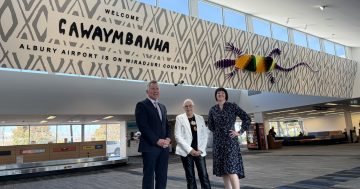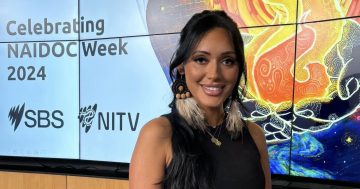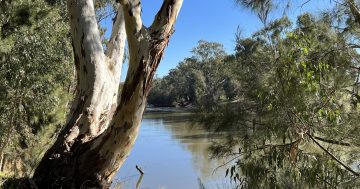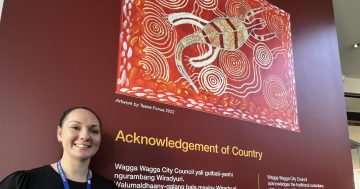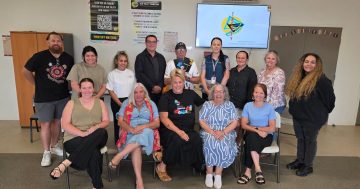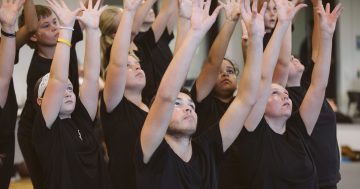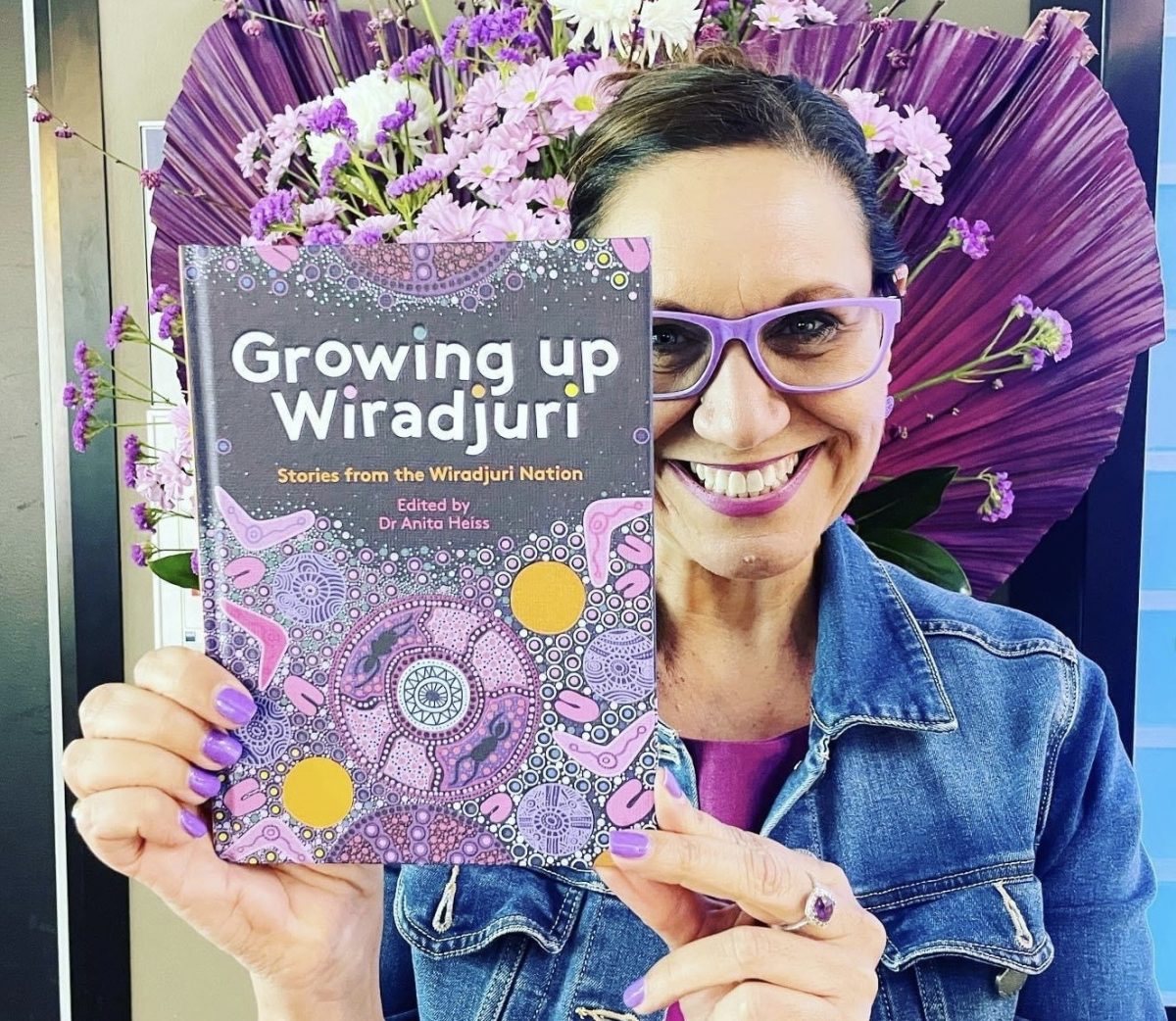
Wiradjuri author Dr Anita Heiss shares the stories of local leaders in Growing Up Wiradjuri. Photo: Supplied.
“The rabbit traps jingle-jangled as I walked over one of the many dry, dusty sheep-tracked paddocks in and around Weethalle.”
That evocative line by Aunty Elaine Lomas comes from a new children’s book created by custodians of the world’s oldest continuous culture.
She vividly describes happy childhood memories of rabbit trapping, living in a bush camp and eating johnnycakes around the campfire.
“What I loved most about living in the bush was the different smells, like the wiiny [burning], the fire and the burning pine and gum leaves with the gentle wafting scent of eucalyptus, especially when the billycan was boiling.
“My aunty would throw a handful of tea leaves as well as some fresh eucalyptus leaves into the boiling hot water … ,” Aunty Elaine writes.
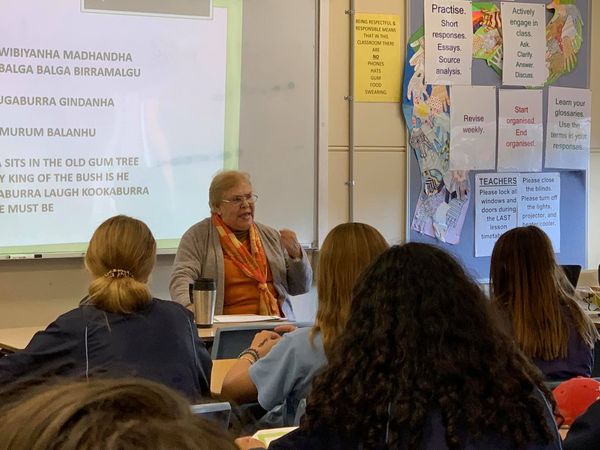
Aunty Elaine Lomas teaching language to Wagga High Students. Photo: WWHS.
Wiradjuri elders are sharing their stories in a powerful new children’s anthology called Growing Up Wiradjuri.
Edited by award-winning author Dr Anita Heiss, with a striking cover by Luke Penrith and illustrations by Charmaine Leddin-Lewis, it’s a book to treasure for both Wiradjuri people and anyone living on Wiradjuri country.
Anita Heiss says the book is a gift to the nation from some of our most treasured elders.
Some of the stories are heartbreaking, recounting the removal of children, or homes being bulldozed, but there are funny stories too and a theme of collective resilience that flows through each chapter like the waters of the Murrumbidgee River.
Aunty Cheryl Penrith writes about growing up with her nan at Brungle, near Gundagai.
“Brungle is where my life journey started, in a tin hut built with found materials, a dirt floor, walls pasted with magazine and newspaper, and kerosene lamps on the banks of the Nimbo Creek,” she writes.
“We lived just up from the bridge where the Nimbo runs into the Tumut River.
“It was a magical place to play, with a dog named Sailor, our grandparents and family and a fig tree that is still there today.”
Aunty Cheryl says she is honoured to be in the book alongside so many elders she respects from Country she loves.
“We are really connected to each other,” she says.
“For us, it’s about the sense of belonging to place and on Country.
“The river is really important to us and the animals are really important to us and you know, this has really come back in the last couple of years with the reinvigoration of the language and all the work Uncle Stan’s (Grant) done with that.”
She says there’s a growing interest in what First Nations elders have to say.
“We’ve had a stolen generation and we’ve had a lot of trauma, but I think our stories of how we’ve come through that – there’s a lot we can take away from our elders about respect and sharing and having all those values about looking after each other and looking after Country,” Aunty Cheryl says.

Uncle Stan Grant was honoured with a lifetime achievement award at this year’s NAIDOC Awards. Photo: Supplied.
In his chapter, Uncle Stan Grant highlights the importance of looking and listening closely, a skill that was passed on to him by his grandfather.
“When you look, you got to see a lot more than you’re looking at. And when you listen, to hear a lot more than what the person is saying,” Uncle Stan writes.
It seems that Australia is finally ready to listen to Wiradjuri voices.
“I think we’ve reached a place in time where our stories are being sought out nationally, where our voices are being elevated,” Anita Heiss explains.
“I think the response we’ve had to Growing Up Wiradjuri already across the country, is evidence that non-Aboriginal people are ready, willing, and wanting to hear localised stories.”
Growing Up Wiradjuri also helps to bring Wiradjuri words like girawu (goanna), wirrinya (sleep) and yindyamarra (mutual respect) into the public vocabulary.
“As an author, I used to think that I didn’t have a big enough vocab to write the stories that mattered, the way they needed to be told,” Anita says.
“Only when I started learning my Wiradjuri language did I realise that what was missing was the Wiradjuri vocab.
“Our words hold many meanings, but most importantly they hold the language of our ancestors that walked this land for millennia.
“To pay yindyamarra to them, and to the cultural warriors of today, telling our stories through our language is not only important, but vital.”
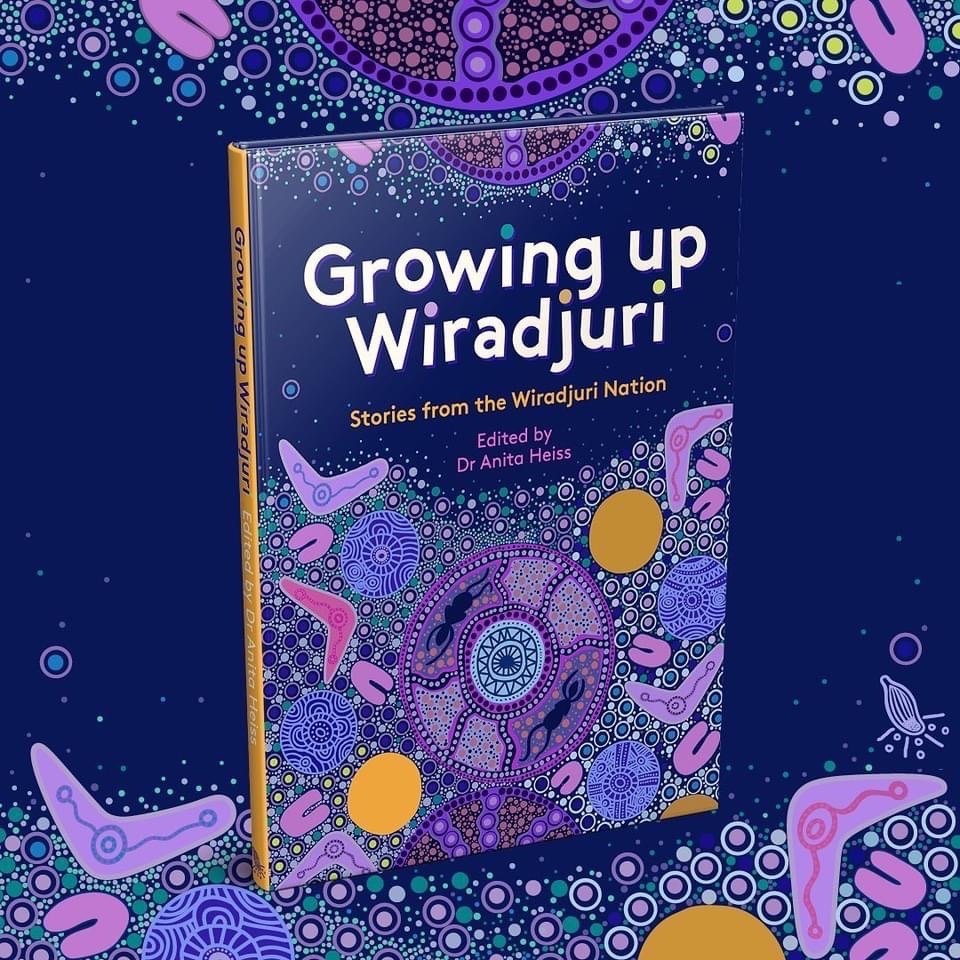
Growing Up Wiradjuri will be launched in Wagga next week. Photo: Supplied.
Anita hopes the book will also be an important resource for the many Wiradjuri people who are growing up away from Country.
“At a guess, I’d say we have as many Wiradjuri people living off Country as we do living on Country, and that is the reality for many First Nations people who travel for work, education, relationships and so on,” she explains.
“I believe that many Wiradjuri readers of this very special anthology will find a new way to connect back to Country through the generosity of the elders who shared their stories,” she says.
Growing up Wiradjuri is being launched on Thursday, October 6 at a private event in Wagga that will be available on livestream here.







